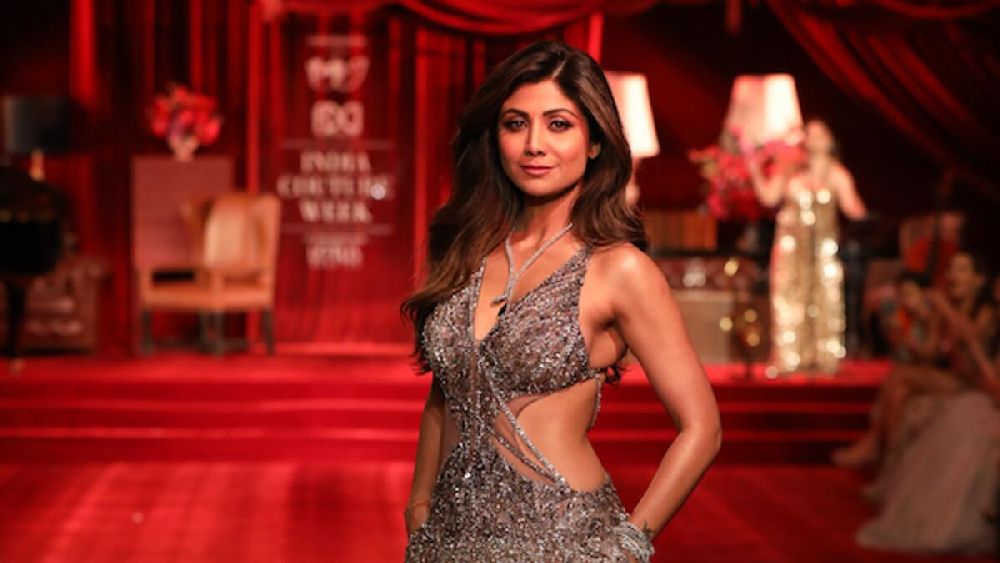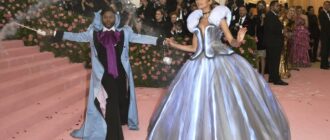
.
When Shilpa Shetty walked the runway in a shimmering, dropped waist gown at the FDCI India Couture Week 2022, held in the capital, flaunting pockets, fishing out her cellphone, we knew the world had changed forever!
No, it wasn’t because our love for the yoga queen increased, but her swish action proved functionality and ease are now the buzzword in bridal wear. You can’t go anywhere without your smartphone which executes almost everything for you, thus the pockets. And this “necessity” has emerged everywhere, from dhotis, lehengas to even embroidered tunics.
The bridal market in India is worth $50 billion, according to a KPMG report, experienced couturiers will tell you it has been recession-proof, despite the world economy slowing down, causing inflation and loss of jobs. Designers toughened up during the pandemic, e-commerce boomed, zoom fittings becoming de rigueur illustrating that geographical boundaries no longer exist while couture shopping.
“For a girl, who is getting married this is going to be a once-in-a-lifetime experience. She wants to enjoy the moment, is no longer coy and mingles in a crowd, she keeps it light-weight so that it doesn’t restrict her movements. Spending, in my view in this segment has not seen a dramatic alteration and business has picked up almost 35 per cent,” says couturier Dolly J.
Post-pandemic intimate weddings are a norm, as the virus wanes and explodes, the world over, brides opt for lesser embroidery, which designers technically call “negative spaces”, unlike earlier where surface ornamentation covered the entire ensemble. There are no can-cans, fewer corsets, in fact some even prefer high necks for pre-wedding soirees, not the actual wedding, depending on their neckpiece each aspect is then worked on.
“What’s important more than anything now is the need to understand the changing relationship between a bride and trousseau. She doesn’t want crystals to overtake her personally, but enhance it. The FDCI ICW 15 th edition mirrored these subtle innovations in bridal wear,” says Chairman Fashion Design Council of India Sunil Sethi.
The new rule is “say no to duppattas”, there is no way you will be seeing brides carrying two heavy ones anymore, even if tradition demands it. A head cover for ceremonies and the other on the shoulder for modesty, brides have announced freedom from handling excess fabric and aspire to enjoy the biggest night, courting ease.
Duppattas are more like extensions, come attached to the blouse, which has metamorphosized into a separate identity or fall from the shoulders like a waterfall. Dolly J added classic ruffles, Suneet Varma gave it a cape-like feel and Falguni and Shane Peacock elevated it with faux feather trimmings.
Professional, intellectual, thinking women seek multipurpose outfits, even when they are getting married, that’s why J J Valaya launched his bridge to luxury line “JJV”. It offers easy to travel with occasion wear, that won’t fill up your entire suitcase with one Indian outfit, brimming with embellishment. He knows his best-selling couture silhouette is still the “Alika” jacket, which you wear as separates with your gypsy skirt, chiffon sari and even a summer dress.
The beauty of cutting-edge couture, is that it is no longer bound by occasion wear, the lines have blurred to cross over to day wear. It is safe to say the jacket has replaced the choli. Post-pandemic, the need for occasion wear is not limited to one event, but how effectively you can use the same outfit multiple times, with existing ensembles in your closet.
Currently, the colour wheel is partial to creams and buttery whites, which are slowly carving their own identity with more conventional, reds and pinks. Observe how Bollywood sweetheart Alia Bhatt dressed for her wedding, simple white sari, it is clear, couture is austere, breathable and fuss-free. Thus, the inclusion of sheer veils and trails! Some even get “love notes” embroidered on them, and have the groom look for it!
“Almost 40 per cent of our business comes from the global bride, but versatility is the key to dressing. Frankly the digital era has shaken things up and two years of ‘exile’ have made customers want to live each moment to the fullest, sensing the unpredictability of life,” says couturier J J Valaya.
Why has the humble cape become such a necessity in modern couture, even as Anamika Khanna has spun a whole industry around this ubiquitous silhouette leaving a legion of ardent devotees? “Because it is a fashionable cover up, and you can dress it up or down with slouchy pants or kurta making it versatile,” says Anamika Khanna. Rahul Mishra added an extra zing to this with exaggerated, embroidered and sequinned poppies, as the bride wants to wear ingenious shapes with a distinct twist. “In the new world, especially women who are born and bred abroad, are experimental. They respect tradition, but will buy an embroidered lehenga blouse, they can team with a pair of faded denims later; or a heavily embellished duppatta with a plain kurta. Skirt-like lehengas are worn with a white tee and sneakers at a destination wedding, it is an interesting time to be in,” says couturier Varun Bahl.
He has crafted paneled skirts, a fresh take on the lehenga, it comes with a slit, super flattering form, you can wear to your friend’s wedding and also a night out with family. “Women are not tutored by what their mothers-in-law or family members have to say. They have the buying capacity and are making their own decisions, which is the biggest contributory factor in the way they view their next expensive purchase,” he concludes.







